B.FLT.4027 - Bovine appeasing substance: A meta-analysis of the effects on production, health, and stress indicators
Cortisol concentrations were significantly reduced by bovine appeasing substance treatment indicating potential to mitigate the effects of routine animal husbandry stress on cattle.
| Project start date: | 23 September 2024 |
| Project end date: | 30 March 2026 |
| Publication date: | 23 September 2025 |
| Project status: | Completed |
| Livestock species: | Grain-fed Cattle, Grass-fed Cattle |
| Relevant regions: | National |
|
Download Report
|
|
Summary
Bovine appeasing substance (BAS) is a pheromone that has the potential to moderate adverse effects of routine husbandry procedures in cattle. The intent of this study was to evaluate the efficacy of the intervention on production performance, health and blood measures related to stress and immune response in cattle. The target audience is cattle producers, researchers and those interested in the wellbeing of cattle. The results of the research will inform adoption of the intervention and the need for further investigations.
Objectives
To use meta-analytical methods to evaluate the effectiveness of treatment of cattle with bovine appeasing substance to improve production, health and stress indicators.
Key findings
• There was no significant difference in initial body weight (BW) (P=0.434) nor was overall final BW increased for treated cattle when examined using a multi-level model (ES=1.31kg; 95% CI -1.303 to 3.930kg).
• Examination at the univariate level for final BW, which is less robust than at the multilevel as it does not account for the confounding effects of studies nested within experiments showed treatment produced cattle 1.72kg heavier (95% CI 0.06, 3.39; P=0.043), suggesting a potential benefit if study power is increased with well replicated studies.
• ADG, DMI, G:F, diarrhea, respiratory disease, overall mortality, and virus antibodies were not improved with treatment. However, there were positive results in some individual experiments, particularly for final BW, mortality, and virus antibodies.
• For metabolic variables studied, only blood cortisol was reduced by treatment with a 3.85ng/ml reduction (95% CI -7.60 to -0.09; P=0.045), supporting the proposed mode of action of BAS.
Benefits to industry
• Blood cortisol concentrations were significantly reduced by treatment indicating the potential for BAS to mitigate the effects of routine animal husbandry stress on cattle.
• However, despite positive experimental results in some studies, overall, no other results of the meta-analysis were significant.
• At present, there are no outstanding benefits for industry, but some promise of potential benefit based on positive results on individual studies, positive point directions, and significance at the univariate level for final BW.
MLA action
MLA will reach out to the companies that are commercialising BAS in other countries around to the world to explore further R&D opportunities and if successful, registration in Australia.
Future research
• Positive point directions for final BW and mortality suggest the need for more studies to determine whether the intervention can be justified on a cost-efficacy or ethical basis.
• These studies should utilise existing information on timing of sampling to detect treatment effects.
• Suggested areas for funding would be castration, weaning, feedlot entry, and pre-slaughter transport interventions which could all be addressed in a single well replicated study under Australian conditions and standard management practices.
More information
| Project manager: | Matt Van der Saag |
| Contact email: | Reports@mla.com.au |
| Primary researcher: | Strategic Bovine Services |


